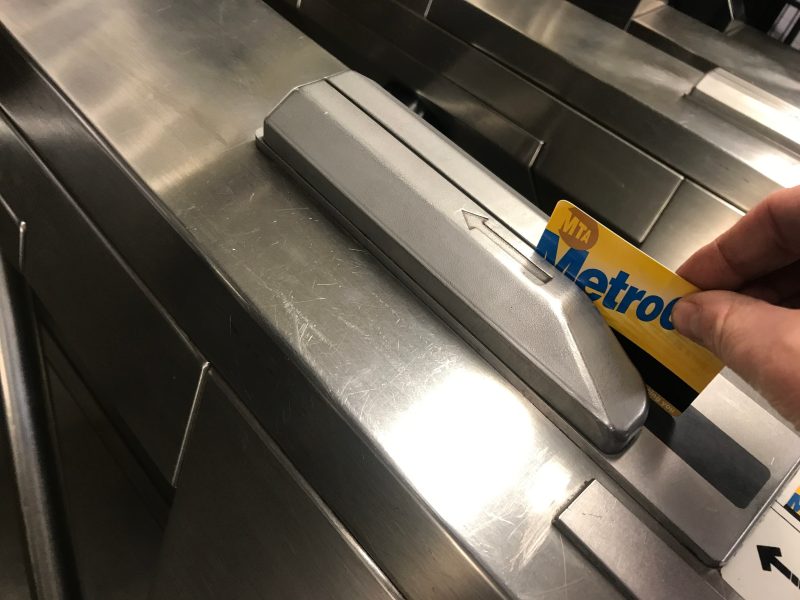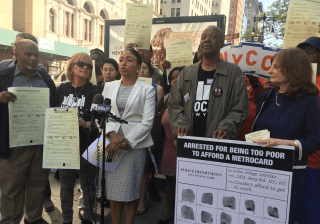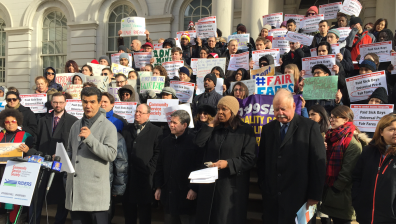EXCLU: Many MTA Board Members Barely Use Their Free MetroCards

Whatever happened to first-hand knowledge?
Many MTA Board members — who are charged with overseeing the city’s mass transit system — barely use their agency-issued free MetroCards, according to data obtained by Streetsblog.
Just three people swiped into the system more than once a day on average over six months last year, and only seven made two trips or more a week, according to the anonymized records for the 23-member transit panel as well as New York City Transit President Richard Davey, who oversees the subways, buses, and Staten Island Railway but is not on the board.
The top four MetroCards accounted for nearly three-quarters of the 1,322 rides the officials took from June through November 2022, while at the bottom end, one board member used the complimentary pass just once and another a mere three times.
The Metropolitan Transportation Authority provided records for its board members’s and Davey’s MetroCard use in response to a Freedom of Information Law request filed in October, but denied Streetsblog the identity of the card holders and instead shared just their serial numbers, citing a privacy law.
The records include monthly swipes for 17 MetroCards from January through November of 2022. Another three cards don’t have any data, and there are also four board members who don’t have a free MetroCard.

The data show that several board members did not use their free pass very often, even as average daily subway and bus ridership had recovered to 64 percent of its pre-Covid levels during that time.
Board members and advocates emphasized the importance of using the system they are tasked with overseeing, such as when they vote on fare policy and tens billions of dollars capital budgets.
“We can talk about billions of dollars in a vague way, but if you say, ‘I was stuck on a train for hours because of signal troubles,’ that’s much more descriptive,” said Lisa Daglian, the executive director of the agency’s internal watchdog organization, the Permanent Citizens Advisory Committee.
Streetsblog got records from January through November of last year, but focused on the period beginning in June, when the current board and leadership took shape after Davey took over as the head of NYC Transit in May and following six new appointments to the board in June.
During that time, only three people took a trip once a day or more, eight rode fewer that once a week, and four made fewer than two trips a month.
The 23-member board includes several members from counties of the MTA’s service area on Long Island and the suburbs north of the city, but even those could use the subway a handful of times each month to travel from the commuter railroads at Grand Central or Penn Station to the agency’s Lower Manhattan headquarters for board and committee meetings.
Their low numbers are still better than the three cards without recorded swipes and the four members who don’t have a MetroCard at all, and one transit advocate said that there would be plenty of Big Apple straphangers who would make better use of free travel.
“There are a lot of New Yorkers who would really jump at the chance for a free ride and make a whole lot more use of it,” said Danny Pearlstein of the advocacy group Riders Alliance.
The most frequent rider used the card nearly 12 times a week, followed by two people using it just over 10 times, and another person riding five times a week.
That top swiper appears to be Davey, since the highest-logging card had zero swipes at the beginning of 2022, then starting with two in April, followed by 78 in May when he became president of the city transit arm at the MTA, and sustained high numbers in the months after that.
MTA declined confirm which MetroCards were used by Davey or the agency’s board chair and CEO Janno Lieber. Spokesman Aaron Donovan just said the transit honchos use the system “regularly.”
Some MTA execs also get free OMNY rides, but reps did not specify which ones.
Low ridership on the board previously came to light in a 2017 Daily News report, when the paper revealed some transit brass only used their MetroCards once or twice over two years. That story was also built on anonymized data.
The MTA used to hand out free MetroCards and E-ZPasses for life to board members until 2008, when then-state Attorney General Andrew Cuomo said the perks were “illegal compensation” for the otherwise unpaid panelists.
A 2018 report by TransitCenter found the problem persisted at agencies across the country. Those that use transit often may be more sensitive to fare changes and better advocate for better real-time information, according to the think tank — which is why activists are often trying to get politicians to ride transit, often to no avail.
Being on the ground helps translate complicated stats into real experiences, said Midori Valdivia, an appointee of Mayor Adams who started serving on the board in June.
“On the one side, transit management is talking about on-time performance, talking about headways, but then to experience that at all hours of the day is important,” she told Streetsblog. “We hear a lot of data about what customers are experiencing, but then when we as board members are customers ourselves, we also get additional evidence about what the lived experience is like for transit riders day in and day out.”
Valdivia routinely pays for her own trips for the more expensive Express Buses, but also uses the agency-provided card for subways and buses, she said.
Andrew Albert, a nonvoting board member representing the PCAC, says he rides the system daily, and said that some board members might also use their own personal MetroCards or pay with OMNY, which does not have free taps for employees yet.
“It behooves everybody to use the system, I think that’s why the cards were issued to board members,” he said. “It’s important that they see what everyone is experiencing, see the conditions, see the performance of trains, the cleanliness of stations — the conditions that everybody experiences.”
International President of the Transport Workers Union John Samuelsen, also a non-voting member representing the labor group, said he chooses not to use the free pass because he doesn’t want transit leaders to track his travels, which he mainly does for the purpose of organizing workers — but he said his fellow board members should be riding frequently.
“From a worker perspective, it is the MTA board members that frequently use the system who understand the everyday trials and tribulations that transit workers go through,” he said.

